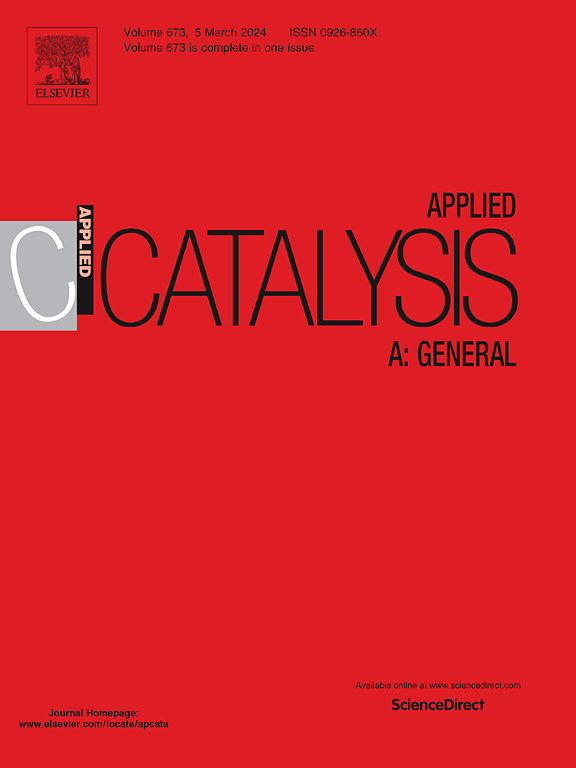Ultralow loading Ru/CeO2 with strong metal-support interaction for efficient catalytic wet air oxidation of m-cresol
IF 4.8
2区 化学
Q2 CHEMISTRY, PHYSICAL
引用次数: 0
Abstract
Modulating the metal-support interaction (MSI) is an efficient strategy to optimize the catalytic wet air oxidation (CWAO) performance. Herein, ultralow loading (0.3 wt%) Ru/CeO2 catalysts were synthesized based on the morphology-dependent effect of ceria supports (nanorods vs. nanocubes) and evaluated for m-cresol degradation. We found that the MSI does not only govern the chemical states of Ru species but also regulates the structure of the interfacial sites and the density of oxygen vacancies. Ru/CeO2-R, with stronger Ru-CeO2 interactions, possesses more Run+ species, well-defined Ru-O-Ce interfacial sites and oxygen vacancies, which enhance oxygen activation and carbon deposits elimination. Consequently, the Ru/CeO2-R catalyst exhibits higher catalytic activity (k = 0.41 min−1) and long-term stability for m-cresol degradation compared to Ru/CeO2-C. This work provides a rational design strategy for Ru-based CWAO catalysts by modulating MSI and interfacial site engineering for the degradation of recalcitrant pollutants.
具有强金属-载体相互作用的超低负载Ru/CeO2高效催化间甲酚湿式空气氧化
调节金属-载体相互作用(MSI)是优化催化湿空气氧化(CWAO)性能的有效策略。在此,基于铈载体(纳米棒与纳米立方)的形态依赖效应,合成了超低负载(0.3 wt%) Ru/CeO2催化剂,并对间甲sol降解进行了评估。我们发现MSI不仅控制了Ru的化学状态,而且还调节了界面位点的结构和氧空位的密度。Ru/CeO2-R具有更强的Ru- ceo2相互作用,具有更多的Run+物质,明确的Ru- o - ce界面位点和氧空位,增强了氧的活化和碳沉积的消除。因此,与Ru/CeO2-C相比,Ru/CeO2-R催化剂对间甲酚的降解具有更高的催化活性(k = 0.41 min−1)和长期稳定性。本研究通过调节MSI和界面位点工程为ru基CWAO催化剂降解难降解污染物提供了合理的设计策略。
本文章由计算机程序翻译,如有差异,请以英文原文为准。
求助全文
约1分钟内获得全文
求助全文
来源期刊

Applied Catalysis A: General
化学-环境科学
CiteScore
9.00
自引率
5.50%
发文量
415
审稿时长
24 days
期刊介绍:
Applied Catalysis A: General publishes original papers on all aspects of catalysis of basic and practical interest to chemical scientists in both industrial and academic fields, with an emphasis onnew understanding of catalysts and catalytic reactions, new catalytic materials, new techniques, and new processes, especially those that have potential practical implications.
Papers that report results of a thorough study or optimization of systems or processes that are well understood, widely studied, or minor variations of known ones are discouraged. Authors should include statements in a separate section "Justification for Publication" of how the manuscript fits the scope of the journal in the cover letter to the editors. Submissions without such justification will be rejected without review.
 求助内容:
求助内容: 应助结果提醒方式:
应助结果提醒方式:


